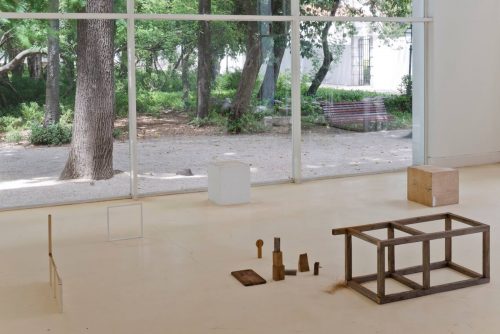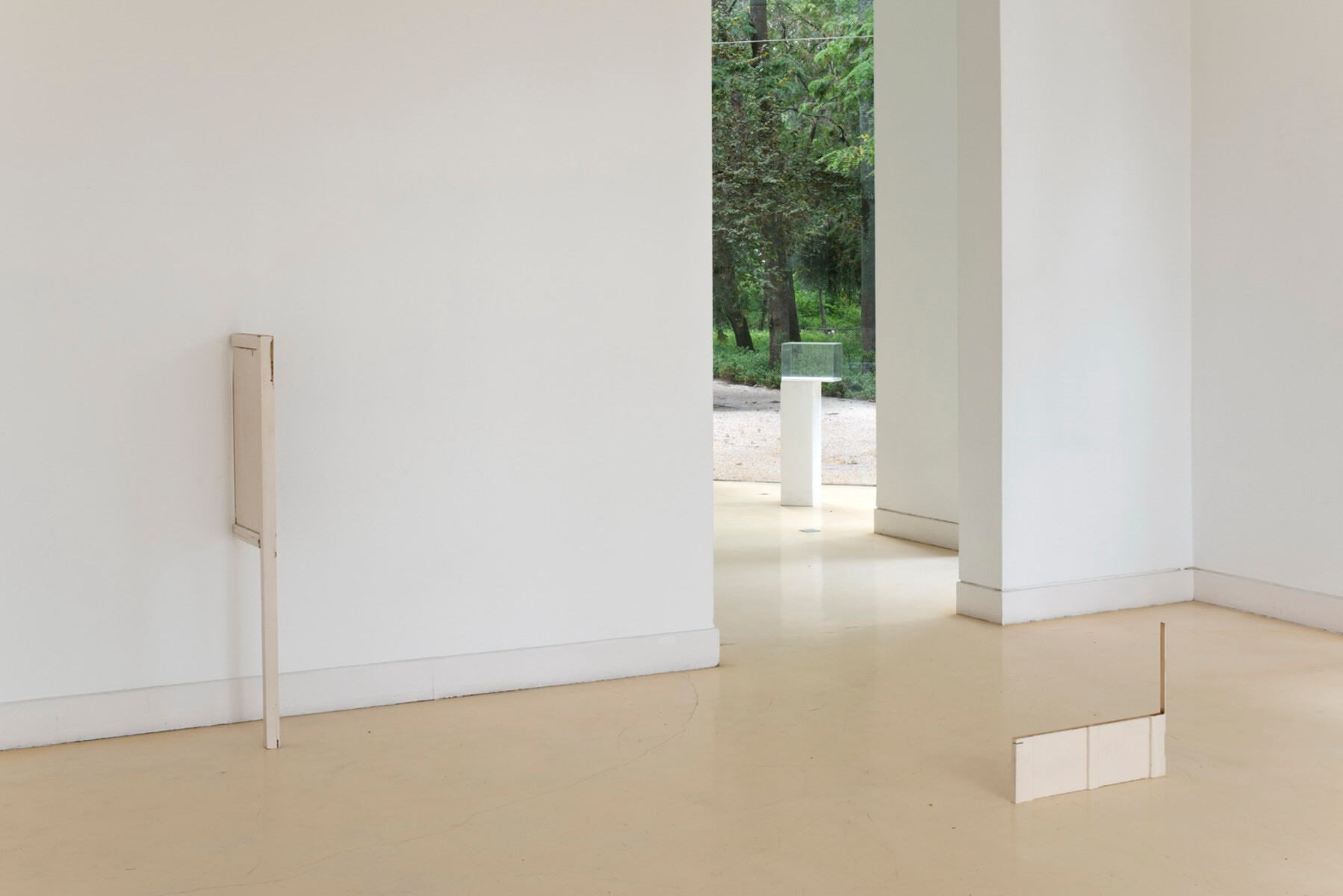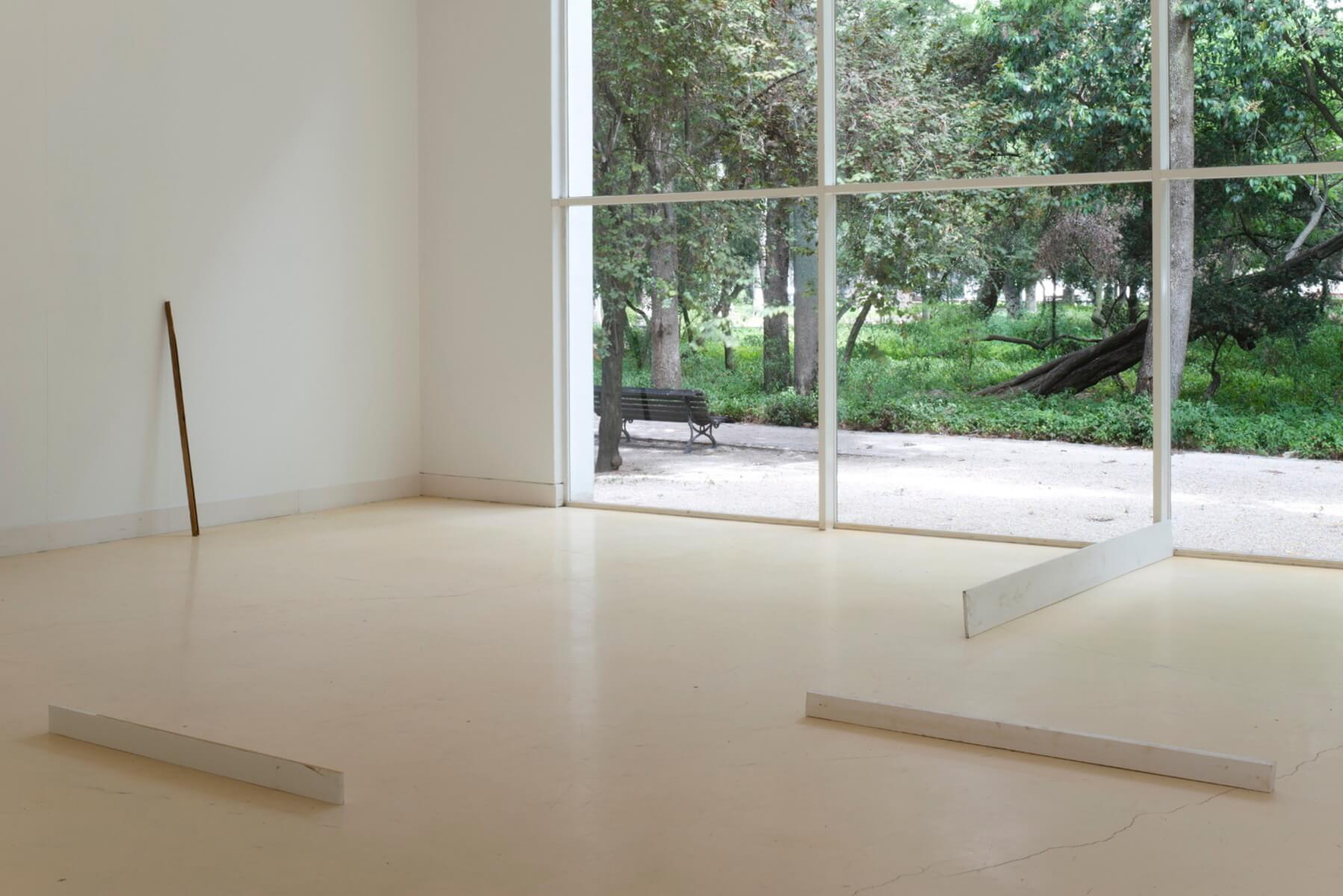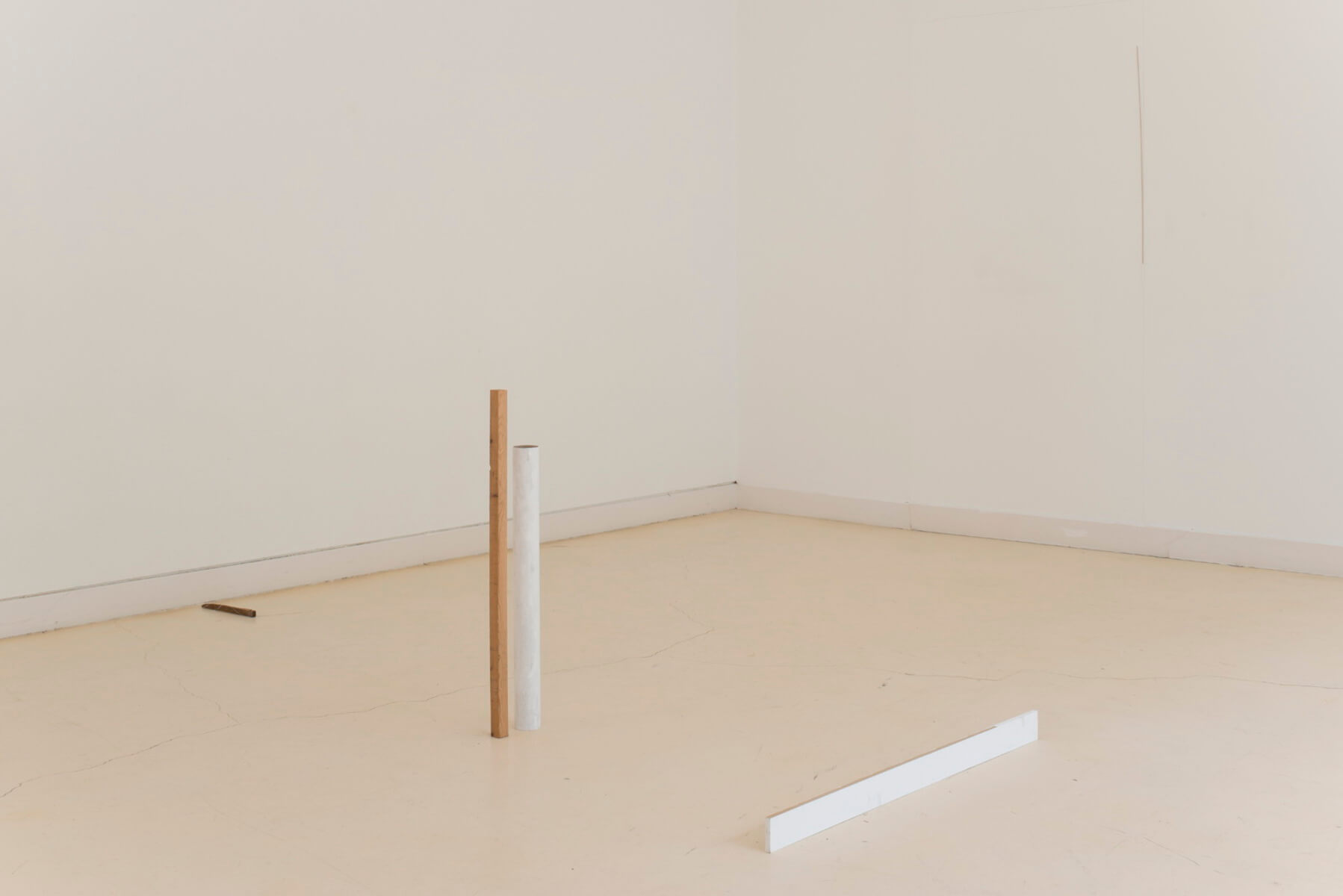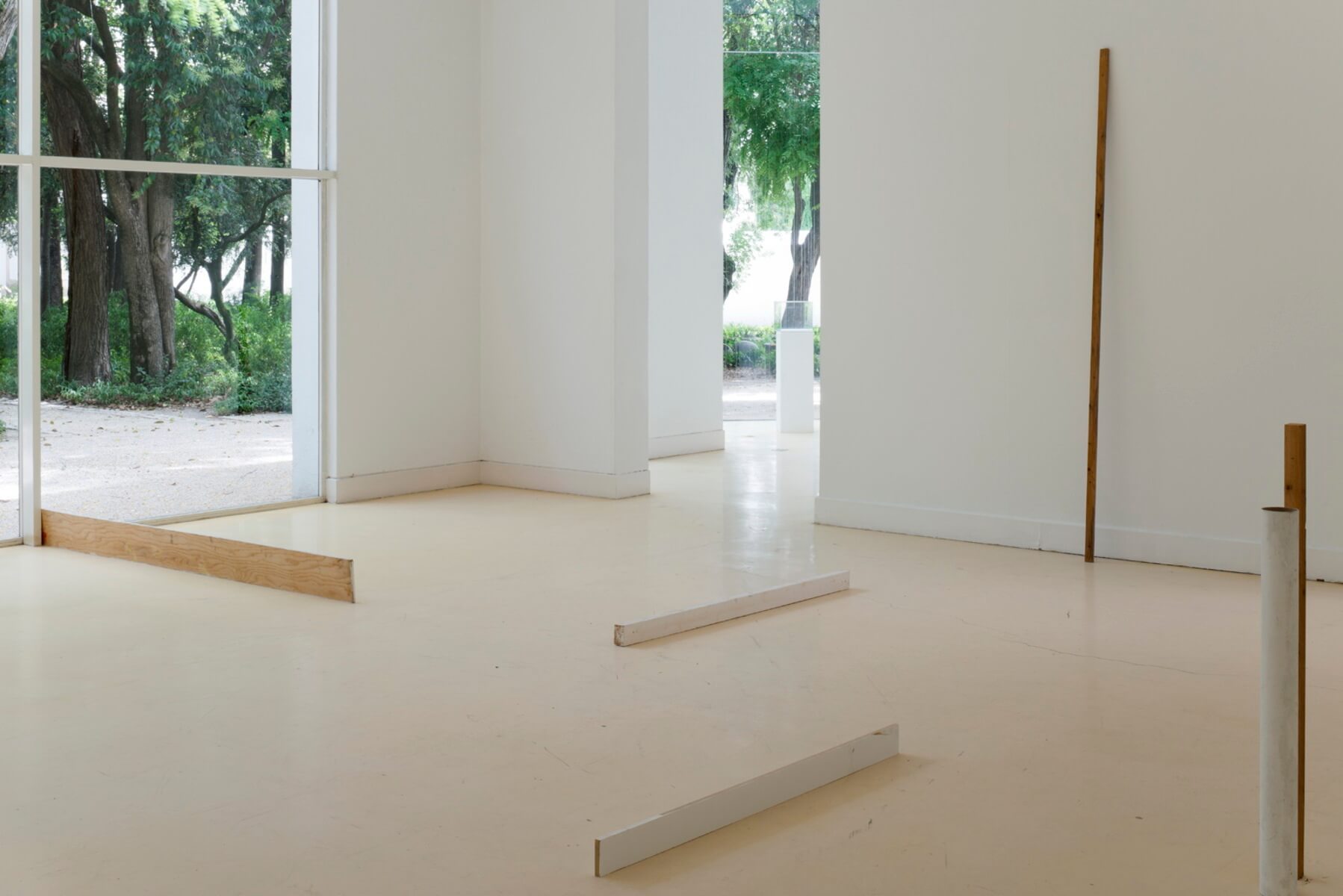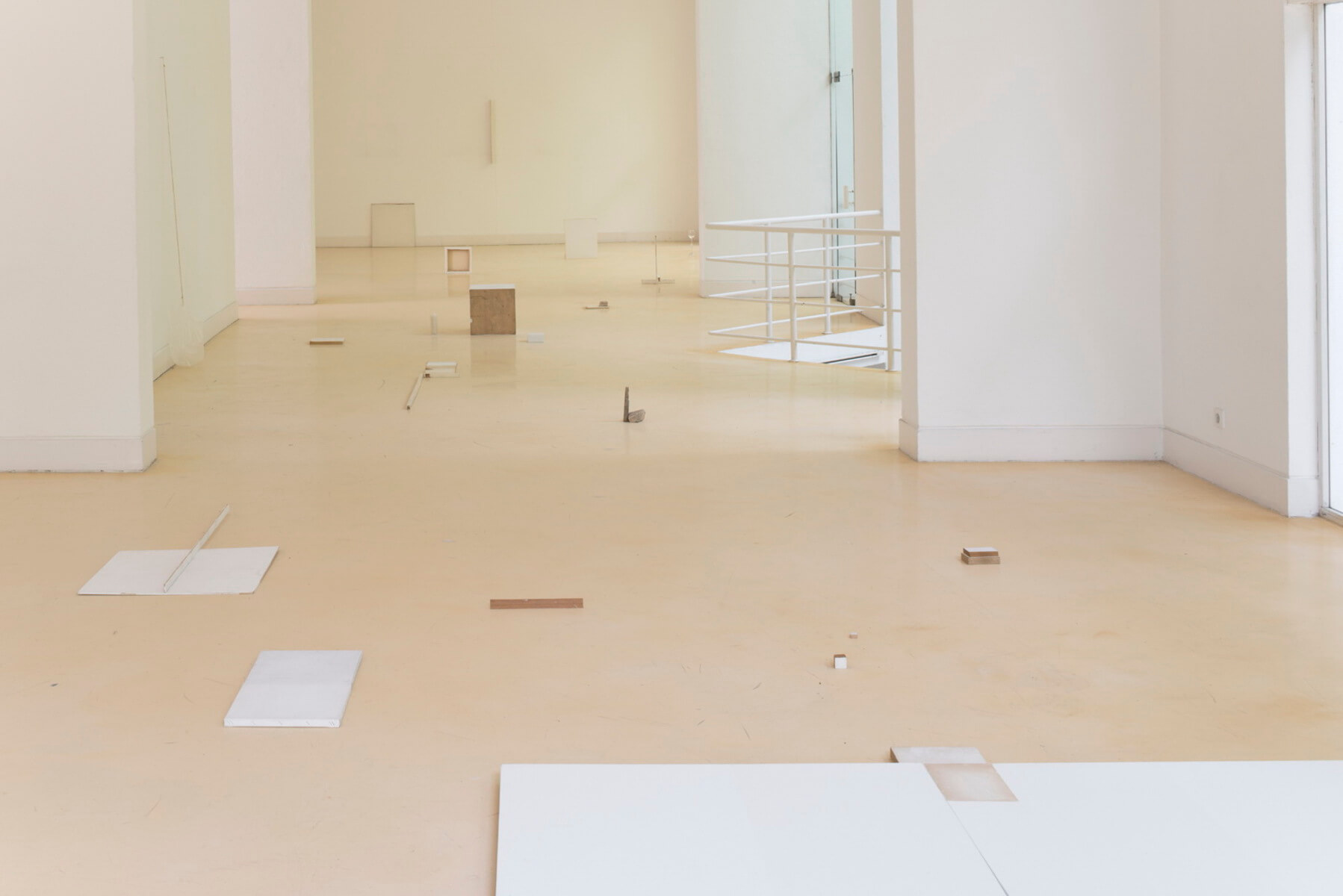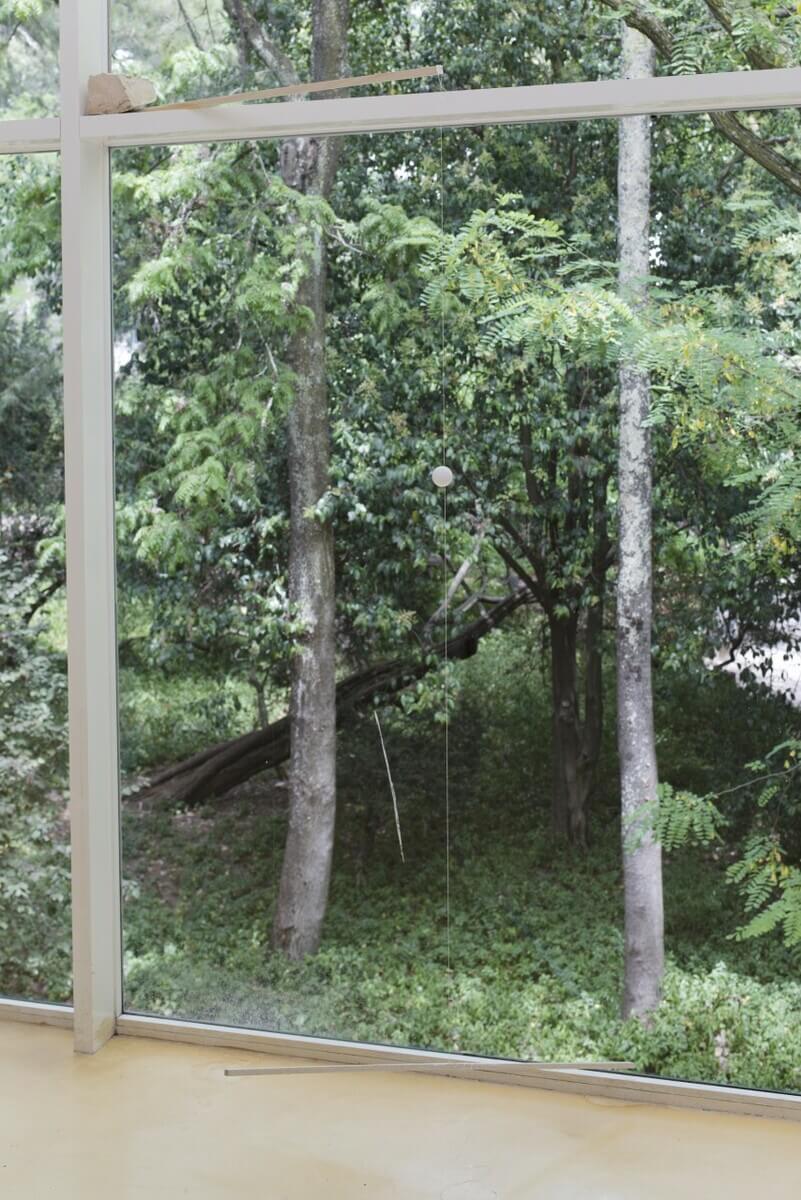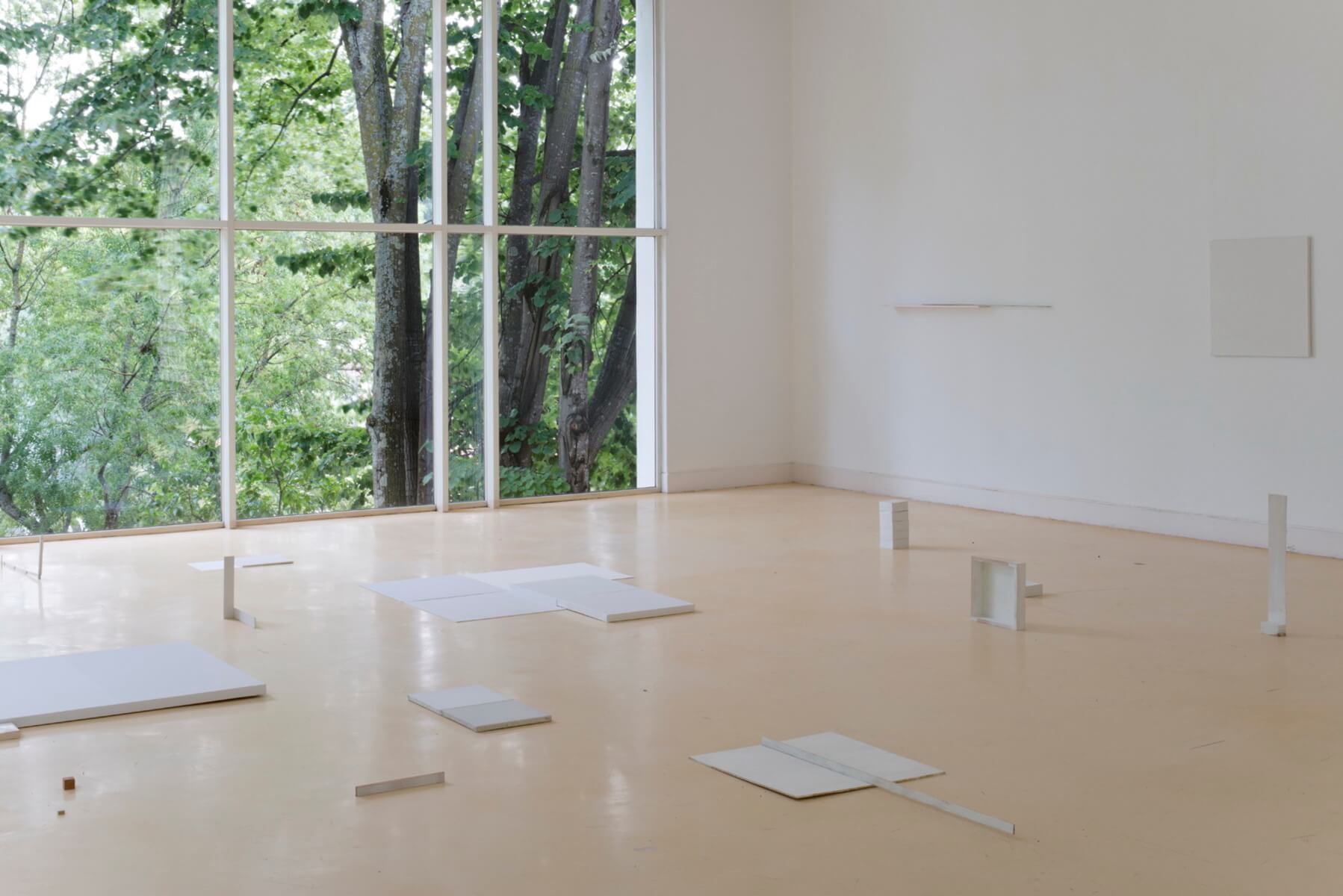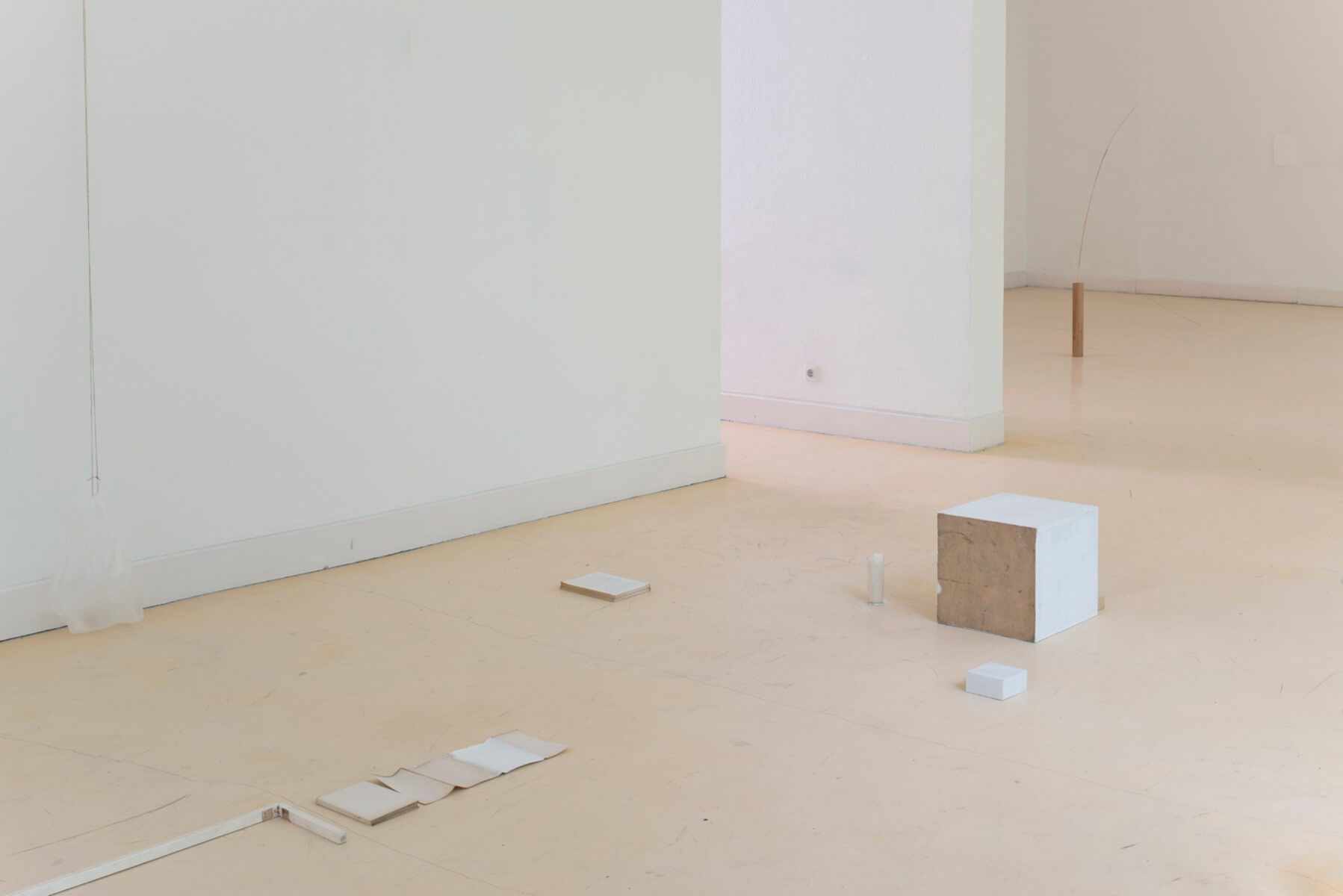– 26.08.2012
The Fernanda Gomes (Rio de Janeiro, 1960) exhibition in the White Pavilion of the Museum of the City of Lisbon marks the artist’s return to Portugal after an interval of three years. Her first exhibition in this country took place in 2006 at the Serralves Museum of Contemporary Art, in Porto, and in 2009 she exhibited at the Graça Brandão Gallery, in Lisbon.
In this exhibition, one of the artist’s characteristic ways of working is reactivated. Space (architecture, proportion and scale) and place (the garden, the passage through the building, and setting) coincide in a bringing together of these two categories, a necessary condition which in Fernanda Gomes’ working process is expressed through a temporary, matter of fact, appropriation of the exhibition space as an extension of her studio.
Based on two levels, the White Pavilion has certain characteristics, such as the great glass walls, the soft yellow tone of the floor and the side doors leading to the garden, which are extremely conducive to the methodology and rigour that characterises the artist’s approach. The restrained palette of muted shades, in which the original colours of the materials and the assembled objects – such as wood, glass, books or fragments of paper – dominate, and of course the presence of white, form part of the exhibition’s invitation to reconsider Fernanda Gomes’ visual vocabulary, in which apparently humble materials are assembled in a way that reaffirms the poetic and temporal value of the work constructed in the space as a relationship with the place, the garden, the city and the journey towards the exhibition space.
In this exhibition, which has no specific title, objects are convened for a transmutation, in the manner of a three-dimensional (sculptural) mapping whose coordinates are unknown to us, yet which we use to reorganize our gaze and our consciousness of time. Through relishing the sometimes imperceptible differences, in a serene confrontation with the powerful recontextualisation of the universe wrought by Fernanda Gomes’ approach.
-João Silvério
– 26.08.2012

